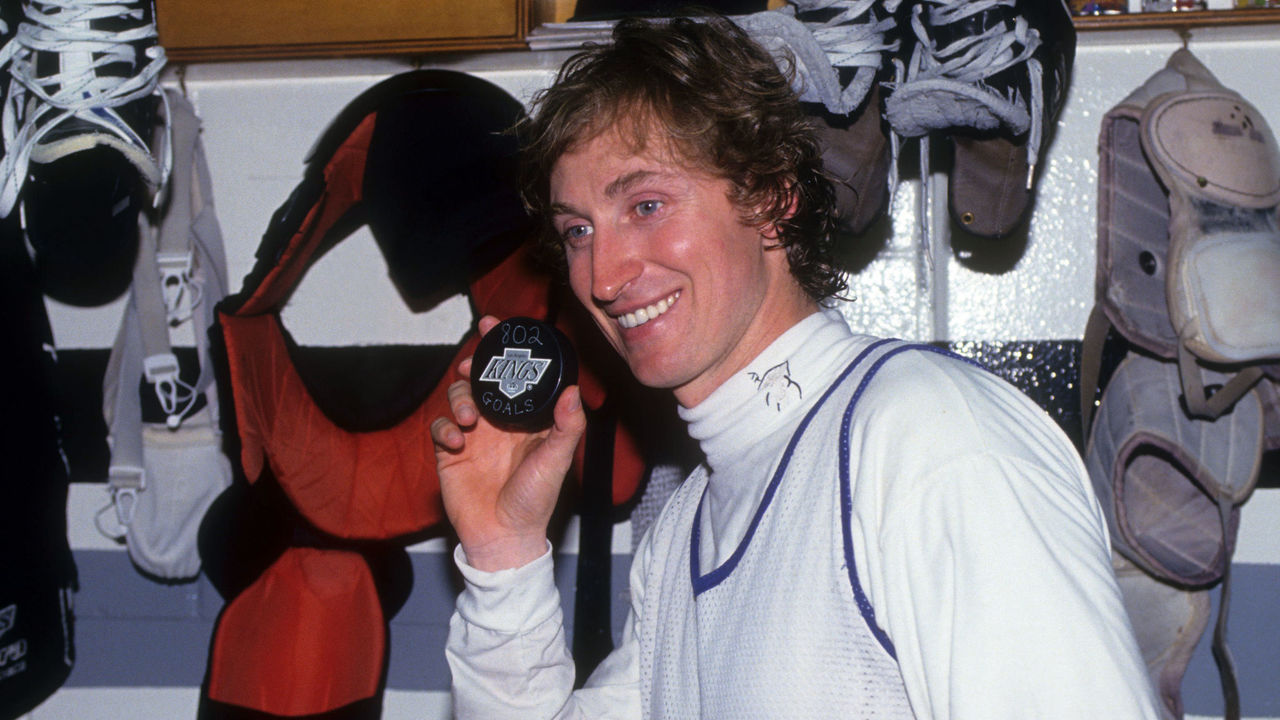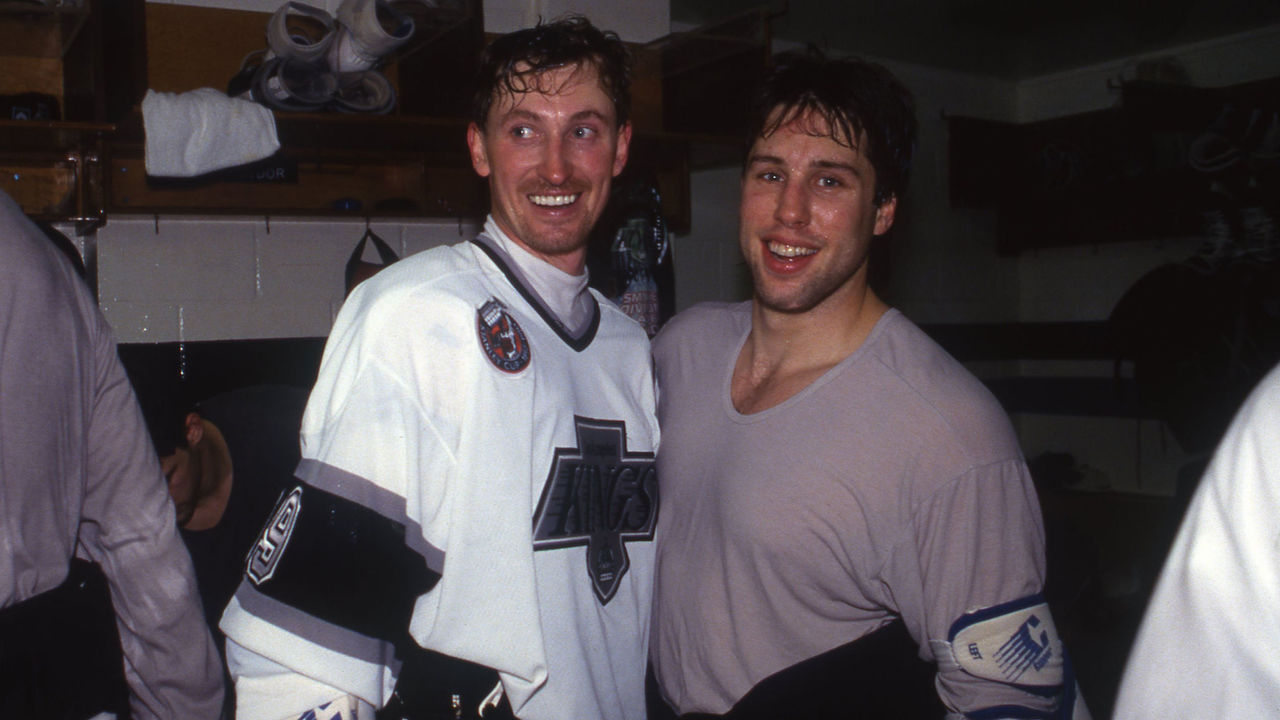Broken doors, missing nets: Ex-players reflect on NHL's obsession with neutral-site games
Alan May can't recall every single game of his dizzying pro hockey career. After all, he skated for 16 teams across five leagues from 1986 to 1999.
But he does remember the night in February 1994 when a players' bench inside Richfield Coliseum - a since-demolished arena near Cleveland - literally fell apart in the middle of a heated Capitals-Flyers game being aired on national television.
"Washington-Philly games were always super physical back then," said May, who had a five-year run with the Caps and now analyzes their games on TV for NBC Sports Network. "And at one point, the door on our bench fell off. So you're full sweat, you're in a rivalry game, and I believe we were waiting for over half an hour, 45 minutes before the door was put back on … It kinda sucked the life out of the game."
Of course, neither the Capitals nor Flyers called Richfield, Ohio, home. (No NHL franchise has represented the Cleveland area since the Barons merged with the Minnesota North Stars in 1978.) In the early 1990s, however, the NHL made a cameo. The league staged 50 neutral-site regular season games across North America in an effort to broaden its appeal, also hoping to take advantage of Wayne Gretzky's presence on the global sporting scene and in popular culture.
Richfield Coliseum made the cut for venues, despite what May describes as its "horrendous" dressing rooms and excessive cold. The Washington Post's game story suggests that fixing the bench door took only 15 minutes, but also mentions that after Al Iafrate was checked into the side boards, "the top two feet of plexiglass snapped off and fell into the laps of fans. No one appeared to be hurt."
"I don't think the NHL won hockey fans that night," May said.
Wednesday marks the 25th anniversary of the last game in the NHL's neutral-site experiment, which covered the 1992-93 and 1993-94 seasons.
In game No. 50, Gretzky's Los Angeles Kings smashed the Edmonton Oilers 6-1 in front of 10,363 fans at ARCO Arena in Sacramento on April 3, 1994. The nearby San Jose Sharks were only a few years old, and downstate, Anaheim had just welcomed the Mighty Ducks. Gretzky had broken Gordie Howe's record for career goals about two weeks earlier. California hockey was booming.

Of the 50 neutral-site games, Hamilton, Ontario, led the charge with eight dates. Six each went to Cleveland, Minneapolis, Sacramento, and Saskatoon, Saskatchewan. Five games were played in Phoenix; three in Halifax, Nova Scotia; and two in Milwaukee. Eight one-offs were held in Miami, Dallas, Cincinnati, Atlanta, Indianapolis, Oklahoma City, Providence, R.I., and Peoria, Ill.
In relatively short order, the NHL managed to hit 16 cities in 15 states/provinces, splitting the profits between franchise owners and the players' association. To accommodate the initiative, the schedule increased from 80 games per team to 84 in 1992-93 and 1993-94, with every club playing two neutral-site games per season. (The current 82-game format was introduced after the lockout-shortened 1994-95 campaign.)
Joe Cirella, a defenseman for the New York Rangers and Florida Panthers during this time, skated in three games, one in Sacramento and two in his hometown of Hamilton. He considers the neutral-site project a low-risk, high-reward endeavor similar to today's stream of outdoor games.
"Looking back, I think they were testing the waters for expansion and franchisees," Cirella said, "to see if there was enough support in these areas or the arenas to support an NHL team."
The forgotten experiment
A whole generation of fans is unaware of this gigantic grow-the-game concept drummed up by the pre-Gary Bettman NHL and designed to - as the New York Times reported then - "repair its image" in the wake of the 10-day players' strike in April 1992.
Hands up if you knew the Nordiques and Canadiens - bitter Quebec rivals - played a game in Phoenix in January 1994? Or that the powerhouse Penguins and conference-foe Bruins battled in Atlanta in February 1993, more than a decade after the Flames moved to Calgary and six years before the Thrashers arrived on the scene? How about the Islanders and Oilers flying across the continent in December 1992 for a one-off in Oklahoma City?
"It was in the middle of nowhere, hockey wasn't a part of the area, we were playing the Oilers," former Islanders goalie Glenn Healy said of the game at the Myriad Convention Center. "Why would these people in Oklahoma City care about a Canadian team?"
Oklahoma City, however, had been the home of Central Hockey League teams off and on since 1972, and more than 11,000 people showed up to see the NHL in person. "I've always wondered if the NHL could have gone there, to a place with such a rich hockey history, and beat the NBA," May said.
If you include Columbus, Ohio, which is a short drive from both Cleveland and Cincinnati, six of the 16 neutral-site cities have been awarded a relocated or expansion franchise in the intervening years. Clearly, the NHL identified fertile ground over this period - though the tour itself wasn't immune to hiccups.
Exhibit A: Healy's experience in Dallas a handful of months prior to the North Stars' move to Texas in 1993. The apparent lack of air-conditioning inside Reunion Arena wasn't Healy's only problem as the Islanders faced St. Louis.
"I can recall going out for warmup and sticking my head between the panes of glass at the back of the rink and saying, 'We need the nets out for warmup!'" Healy said.
A local asked: "'You need the nets for warmup?! Not just the game?' 'Yeah, they’re going to warm up and shoot on me. It would be nice to have a net.'"
Some neutral-site arenas either had to make ice for the first time or hadn’t done so in years. This led to inconsistent playing conditions for regular-season games, even if ice standards weren't as high as they are today.
"For both teams, it was a road game," said Cirella, now an assistant coach for the AHL's Stockton Heat. "All the logistics behind it - just like any neutral-site game, now or then - it's a nightmare for whoever's setting that up."
The amateur feel didn't stop there. May remains amazed at how naked the boards looked without advertisements. Healy remembers chairs being placed over holes in the ice during warmup, and the entertainment and dining options outside the rinks underwhelmed visiting players, coaches, and staff.
“When you look at NHL cities today, whether it's L.A. Live or Maple Leaf Square, or All-Star Games where there's tents set up and a fan fest … Sorry, no, none of that back then," Healy explained. "Go play your game, order pizza, get out of town.”
May said, "It was a mom-and-pop league the way some of these owners were. You still had some teams not televising games, teams not wanting to put nameplates on jerseys so people would buy a $1 program. It was a lot of small-minded thinking."
The league grows up
The players were gung-ho to help grow the game. They understood the peaks and valleys of attendance and could look past the poor ice conditions. But they had a job to do and games to win, the same way players do in 2019.
"The luster kind of wore off, you know? Much like these outdoor games nowadays," said Warren Rychel, another member of the Gretzky Kings. "I know they sell them out, but as a player, once you've done one, it's like, 'OK, that was great. I got my picture on the outdoor ice with my family. We got to skate.'
"It is what it is," he continued. "It's all about the fans, that's for sure. They're No. 1."

Attendance for neutral-site games varied greatly; 18,782 people packed Richfield Coliseum for a Penguins-Oilers showdown in March 1993, but only 6,222 were on hand to watch Devils-Nordiques at the Target Center in Minneapolis a year later. Hamilton's Copps Coliseum, which is situated between Toronto and Buffalo, and Milwaukee's Bradley Center - a place Rychel describes as the "best arena in minor pro hockey" at the time - drew large crowds.
According to records curated by Kenn.com, the average attendance for the 50-game package was 11,196. Not great, but not bad considering the games were held almost exclusively on weeknights (none were played on Saturday and six were played on Sunday).
The initiative was also part of the league's larger focus on getting the greatest player in the world in front of as many prospective fans as possible. However, Gretzky couldn't play in either of the Kings' 1992 neutral-site games; in September, he'd been diagnosed with a herniated disc, an injury that threatened his career. He was healthy for the team's visits to Phoenix and Sacramento in 1994, though, and recorded three points in each game.
"We all recognized there's a unique opportunity and that we'd be going into different markets," said Kelly Hrudey, Gretzky's teammate in L.A. for eight years. "It didn't seem like anything unusual because, starting when I arrived at my first Kings training camp in 1989, we were traveling North America anyways during the preseason … It was a natural fit for a lot of us."
Higher standards, on and off the ice, were beginning to replace the wild west of the 1970s and '80s. The neutral-site experiment feels representative of the NHL's place in pro sports at the time, just as Bettman was hired as the league's first and only commissioner.
"It's part of the building process. It's part of maturing. We grew up, figured stuff out," said Healy, who's now the executive director of the NHL Alumni Association.
"We tried the neutral-site games. We figured out chartering would be better (than flying commercial), figured out that maybe training would be better this way, or eating this way would be better. Team psychologists, sleep doctors. Everything is better than it once was. But we had to grow up - and we have."
John Matisz is theScore's National Hockey Writer. You can find him on Twitter @matiszjohn.